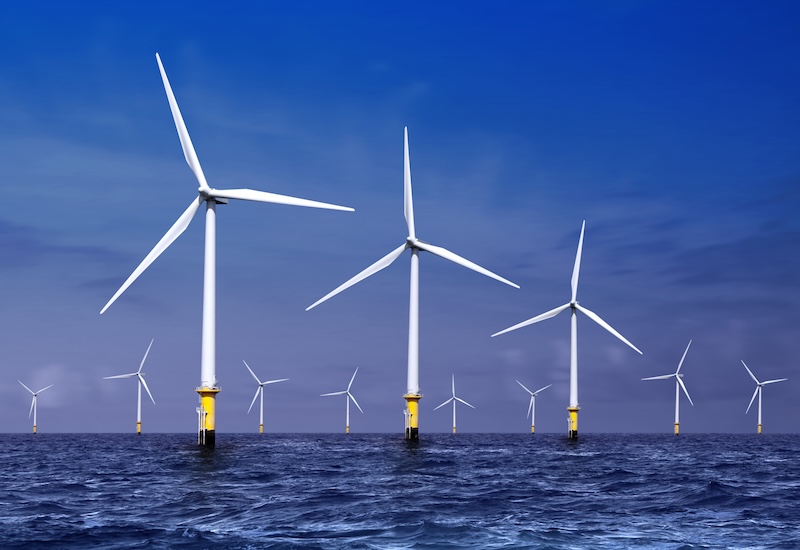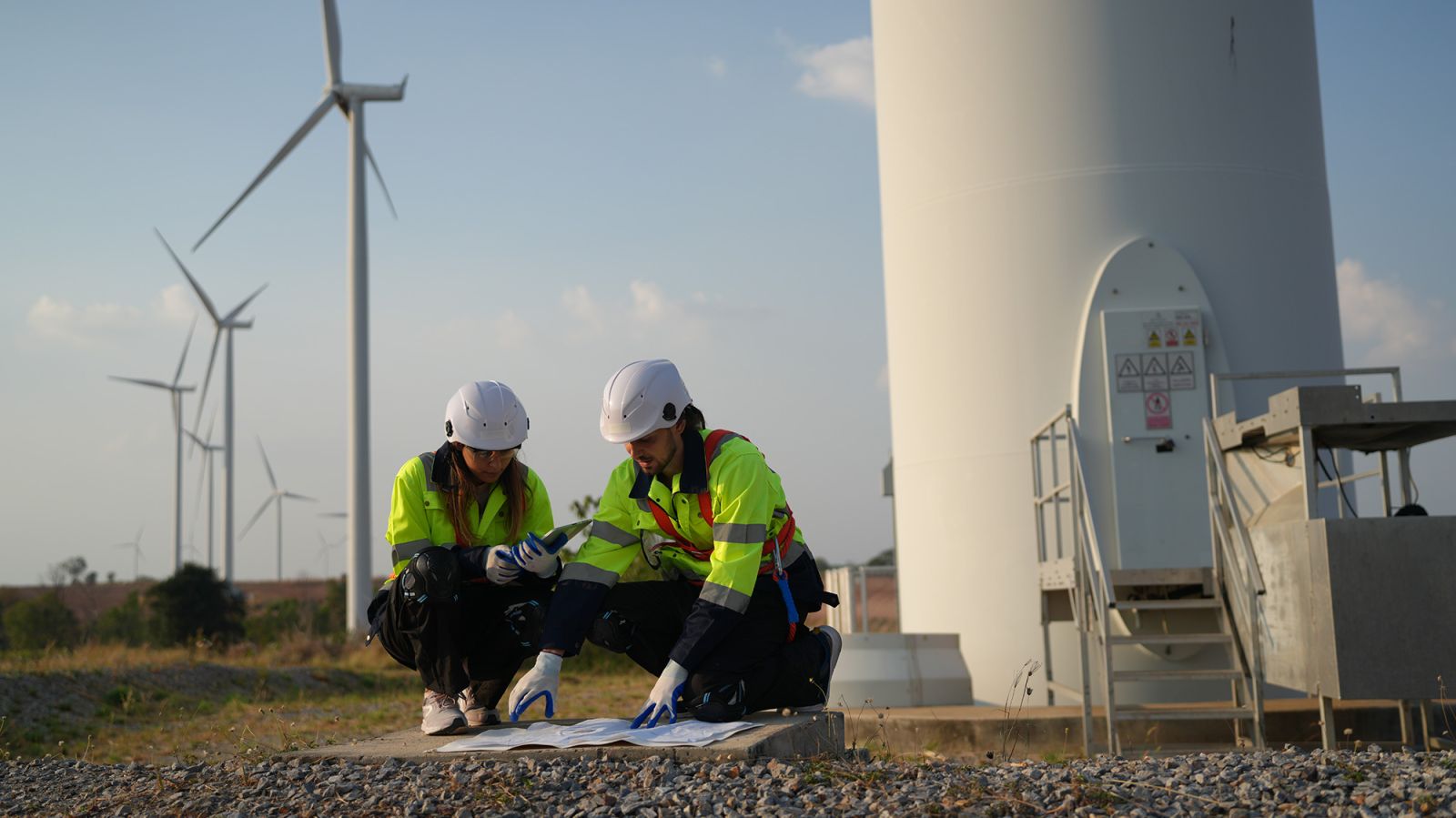AI - The Windstorm for Renewable Energy
Wind energy is fundamental for substantially decarbonizing the U.S. electric sector. Wind provides clean and sustainable electricity without toxic pollution or global warming emissions. Moreover, it creates jobs, boosts local economies, and saves water consumption compared to traditional energy sources.
According to the U.S. Department of Energy, wind energy could avoid the emission of 12.3 gigatons of greenhouse gases by 2050 and save 260 billion gallons of water that the electric power sector would otherwise use.

In the race for sustainability, wind turbines have gotten larger every year: taller towers, larger rotors, and higher-rated capacity. By 2025, turbines will have increased in size by an average of 60 percent from those installed between 2011 and 2020. This increase in size is primarily driven by project economics: Larger turbines tend to generate energy at a lower cost per kilowatt-hour. However, this increase in the size of utility-scale wind turbines make inspections and maintenance interventions at extreme heights (often in strong winds and vibrating structures) inherently dangerous. According to the American Bureau of Safety and Environmental Enforcement, there were 249 accidents resulting in 161 fatalities associated with manual turbine inspections in the last decade.
To address these complex challenges, the industry must undergo a digital transformation toward artificial intelligence to create safer automated solutions, modeling complex relationships, predicting outcomes, and quickly creating strategic asset optimization strategies.
The complexity of larger turbines
Using larger turbines results in a lower cost of energy, but they are more prone to failures and faults. That’s an issue because the industry is increasing the size of these turbines much faster than they can prove existing platforms. Some of the outcomes of this growth are an increased percentage of failure of drive trains, blades, and towers. These bigger blades, now in the range of 200-meter rotor diameter, are more prone to defects during manufacturing. Coastal and offshore turbines exposed to saltwater have issues with blade corrosion. All these issues accelerate material degradation and compromise turbine integrity.
Blades can also experience fatigue and material defects. Even though the industry has tried to move to condition-based monitoring, traditional maintenance strategies for pre-set schedules are still quite prevalent. As a result, 20 to 50 percent of wind turbine failures are attributed to inadequate maintenance practices, including missed inspections, improper repairs, and a lack of preventative measures. As the size of the turbine increases, the sophistication of maintenance and operations (O&M) needs to follow suit. Technology can help.
AI driven maintenance
Artificial intelligence (AI) can be used to mitigate issues with wind turbines, which can help reduce downtime and maintenance costs. A renewable energy-specific, AI-powered technology allows wind operators to move to a condition-based maintenance model, where equipment is serviced based on its real-time condition rather than fixed timelines. AI can reduce maintenance costs by 15 percent annually, improve reliability (which can boost revenue yield by up to 5 percent by identifying performance issues), optimize maintenance schedules, and improve forecast accuracy.
Predictive AI identifies patterns in data and uses them to alert operators and managers when there are subtle anomalies or deviations in the patterns. With those predictive alerts, issues can be fixed before they become more significant problems — long before the expectations of performance degradation.
Unlike traditional condition monitoring, Predictive AI doesn’t just register that the temperature of an asset is slightly higher than usual, or that a pump is cycling more quickly than before; it discovers the complex relationships in data from different sources such as assets, sensors, control systems, etc. For example, it might discover that the temperature and pressure in one asset normally correlate in a certain way with the flow rate in another asset. When that correlation breaks down, Predictive AI can alert appropriate parties that something is amiss, and that an asset may be trending toward a potential breakdown or maintenance-related issue.
Prescriptive AI goes one step further, to identify the root cause of deviations, the tasks required to further assess the issue, and the remediating action that should be taken to resolve the problem so frontline workers can intervene efficiently. You can imagine Prescriptive AI as that one technician who always knows what do. Building such a system requires the ability to parse maintenance data and manuals, and correlate maintenance actions with anomalies. A good AI system is both predictive and prescriptive.

Physics Informed AI, or hybrid AI modeling, combines machine learning with more conventional physics-based simulation techniques to anticipate when actual operations will fall out of sync with a projected expected performance. It removes the guesswork by providing users with a 360-degree view of operational risks. This information is the goal of many digital twin solutions in industrial operations.
One technology that wind energy industry hasn’t used much is Visual AI. While some of the offshore wind turbines have cameras, they are used for traditional monitoring. Visual AI models can convert these passive cameras into active sensors by identifying issues in real time, alerting the right personnel. This can be extended to monitoring blade and tower conditions in real time as opposed to periodic drone inspections. It can also be used to ensure that O&M personnel are wearing appropriate PPE and following best practices. Visual AI technology can help dramatically improve situational awareness and prevent safety incidents.
In 2024, the United States had over 150.1 gigawatts (GW) of installed wind power capacity from more than 74,000 turbines across 44 states, plus Puerto Rico and Guam. As we all rely more and more on wind energy, and as the size of turbines continues to increase, more advanced technology is necessary. AI applications — Physics-Informed, Prescriptive, Predictive, and Visual — are essential components to ensure reliability, optimum operations, and safety.
 Sandeep Gupta is Senior VP Product at Avathon, which provides advanced AI technology that enables wind, solar, and hydroelectric power providers to maximize energy output, predict equipment failures, and operate sustainably.
Sandeep Gupta is Senior VP Product at Avathon, which provides advanced AI technology that enables wind, solar, and hydroelectric power providers to maximize energy output, predict equipment failures, and operate sustainably.
Avathon | avathon.com
Author: Sandeep Gupta
Volume: 2025 July/August








